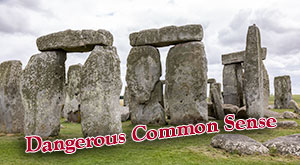apparentparadox’s post about his “Partly Cloudy” experience at the recent squaredancing convention rekindled my musings about the state of that “friendship set to music” hobby. I had a “mostly sunny” convention, but understand how Tim experienced the same event so differently.
There is a fundamental dichotomy in the squaredancing community. For some (“Dancers”), the joy of getting through – or at least nearly through – complicated sequences is paramount. For others (“Socializers”), playing with their fellow dancers while testing/straining their personal limits is more important.
Very few people can both play with and in their squares while dancing extraordinarily well. Jordan is my role model for this type of bidanceual skill, although I have neither his personality or dancing ability. But, most people are either Dancers or Socializers.
There is not a greater good in one position or another. In addition, there is no permanence to these roles. I have seen Dancers slack off from their practicing and show up at a later convention as a self-righteous Socializer. And the mirror of that.
Right now I fall into the Socializer camp, although I think I am reasonably strong through C2. Not flawless, but usually able to recover from miscues without damaging the square. But, I just prefer to smile and laugh when my corner tries for a split transfer when the call is split trade circulate. Oh well. I’ve done that. And, there will be another sequence soon.
I didn’t try C3-anything this year because I simply didn’t want to put myself in squares with Dancers who couldn’t keep the look of exasperation off their faces if I had slow reaction times or turned the wrong way.
So, I had a lot of fun.
Of course there were times which were not so wonderful for me. For example, when two people in a square were sure they knew where I should be and each tried to hold on and lead me to a different spot. What does Harlan say when people get that grabby: “Pull their little arms off”? Since I was fairly confident at the level I was dancing, I decided to be amused instead of reactive.
It was also difficult for me to dance in few squares which had would-be callers or other type of squaredance lawyer in them. Especially with the bad sound system, it was hard to hear the true caller with the rather constant “helpful” mutterings of the determined souls who were sure that if they merely danced their part the square would collapse. Even though their directions were not directed toward me, they overrode the caller’s voice for the whole square. Whose fault was it then that the square broke down?
I remember these intrusive, pushy instances with the unhappy perfectionists with more pain than I do the squares that broke down from their own ignorance. And there definitely were a couple of those traditional squares from hell, ones where you turn around and there’s no one there to play with. Every sequence.
But for me, a Socializer, the squares from hell that passed without recriminations or snarling were over quickly and are already dim in my memory.
My 2-cents is that we’d all have a better time if we Vaselined our teeth and smiled at each other in the square. You don’t even have to mean it, but when you look happy and pleasant others are likely to relax and dance their best.
So many dancers are concerned with other people’s ability, level, style, and whatever!
I also fully subscribe to Barry Clasper’s “How May I Help?” thoughts originally published in the Zip Coder. (See the full “How May I Help?” article.) Barryisms:
“… our goal in helping should be to help them understand, not just to ‘get them through it’. Someone who arrives in the correct position in a dazed and bewildered state is not likely to be any more successful the next time. We should strive to provide our assistance in a way that permits the person being helped to learn. In this way, we are contributing to their development as dancers, not just the success of a single tip.”
“No help at all [is] by far the best sort of help[emphasis added]. Dance your own part. Be where you’re supposed to be when you’re supposed to be. Give others the maximum opportunity to see positions and formations by being precise and correct in your own dancing. Don’t take shortcuts, dance all movements completely and to the music. When dancing material involving complex formations, do a surreptitious check before moving from your spot to ensure everyone else has seen the formation. Once you leave, their task is an order of magnitude more difficult. Be firm in your use of handholds and hand pressures during the execution of calls. Limp appendages during moves like Relay the Shadow or Follow Your Leader, can throw somebody who is unsure.“
Just call me the Rodney King of Midnight Squares.

I like your rational discussion on this issue. You make some very good points.
Thanks, but of course rational discussions will get you nowhere!
I had fun dancing with you last weekend.